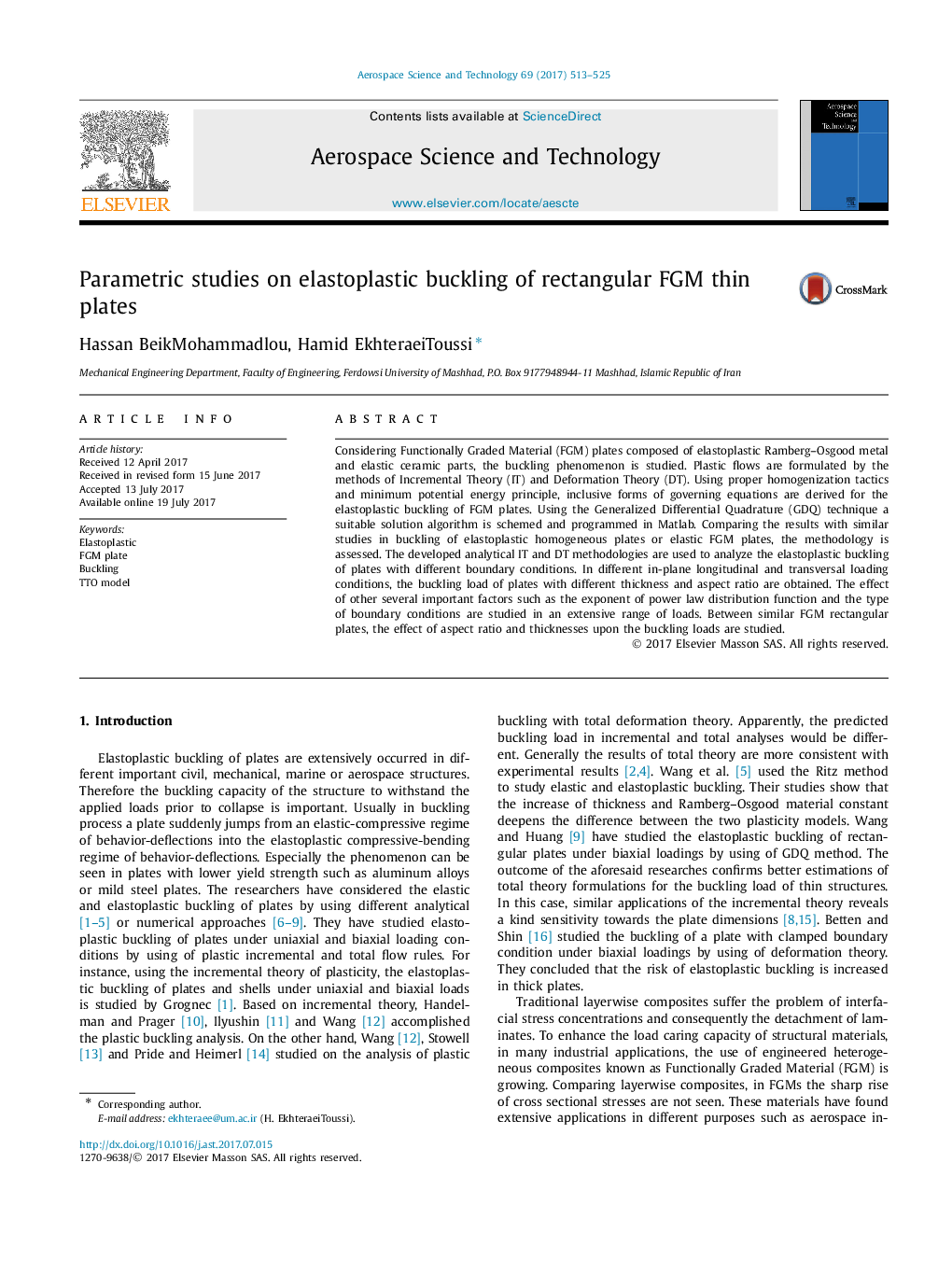| Article ID | Journal | Published Year | Pages | File Type |
|---|---|---|---|---|
| 5472761 | Aerospace Science and Technology | 2017 | 13 Pages |
Considering Functionally Graded Material (FGM) plates composed of elastoplastic Ramberg-Osgood metal and elastic ceramic parts, the buckling phenomenon is studied. Plastic flows are formulated by the methods of Incremental Theory (IT) and Deformation Theory (DT). Using proper homogenization tactics and minimum potential energy principle, inclusive forms of governing equations are derived for the elastoplastic buckling of FGM plates. Using the Generalized Differential Quadrature (GDQ) technique a suitable solution algorithm is schemed and programmed in Matlab. Comparing the results with similar studies in buckling of elastoplastic homogeneous plates or elastic FGM plates, the methodology is assessed. The developed analytical IT and DT methodologies are used to analyze the elastoplastic buckling of plates with different boundary conditions. In different in-plane longitudinal and transversal loading conditions, the buckling load of plates with different thickness and aspect ratio are obtained. The effect of other several important factors such as the exponent of power law distribution function and the type of boundary conditions are studied in an extensive range of loads. Between similar FGM rectangular plates, the effect of aspect ratio and thicknesses upon the buckling loads are studied.
